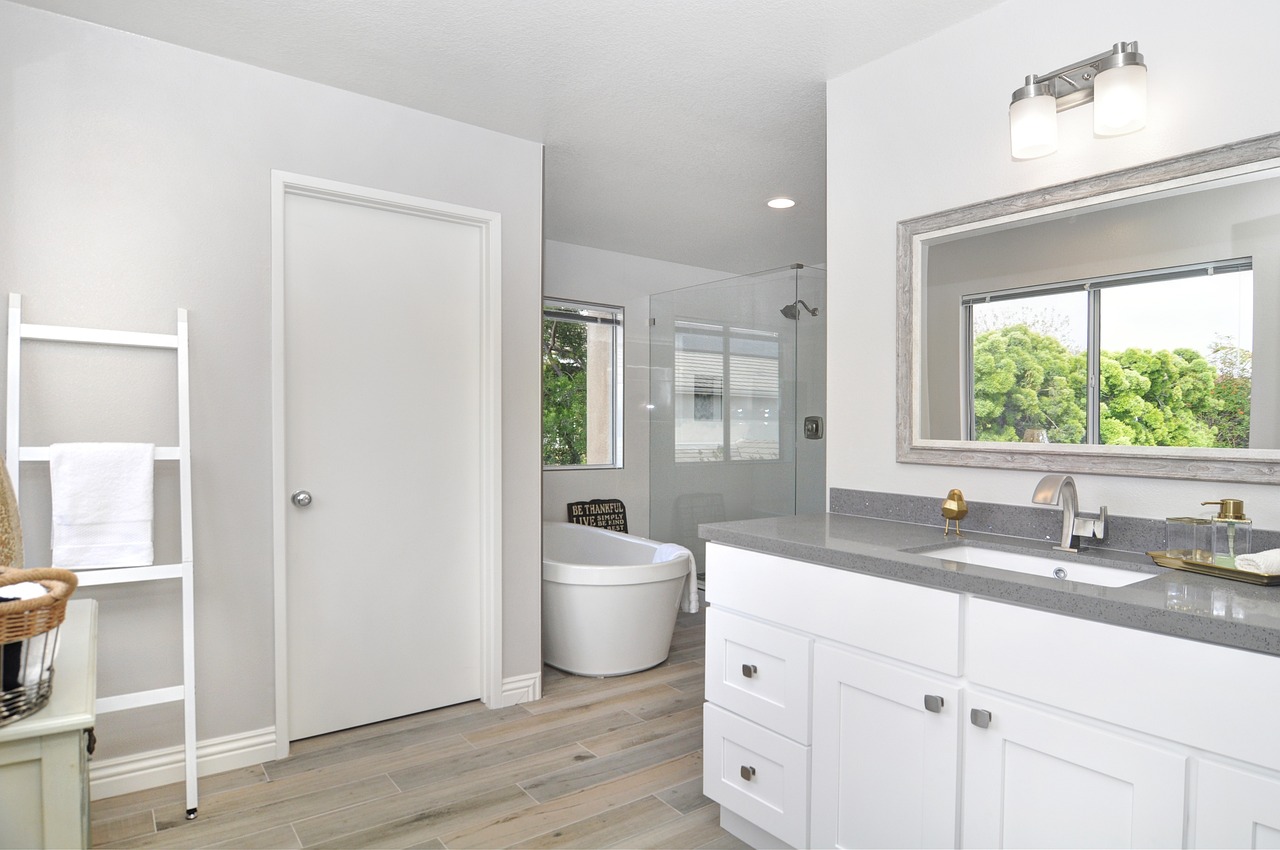
Choosing the Right Curtain Rods for Heavy Drapes Oct 08, 2024







Home Remodeling Tips For Beginners Nov 29, 2023

Lifestyle Hacks For Modern Homeowners Nov 25, 2023
Home Remodeling Tips For Beginners
Nov 29, 2023 14:34

Embarking on a home remodeling project in South Bend, Indiana, a city renowned for its rich history and vibrant community, can be an exciting journey of transformation. Nestled along the St. Joseph River, South Bend offers a unique blend of cultural heritage and modern living, making it an ideal backdrop for homeowners looking to infuse new life into their properties.
Whether you're in a historic neighborhood near the bustling downtown area or in a more serene suburban setting, remodeling in South Bend presents an opportunity to blend the city's traditional charm with contemporary design.
However, for beginners, navigating the complexities of home remodeling can be daunting. From understanding local building codes and regulations to selecting the right materials that withstand the varied Midwest climate, homeowners need to be well-prepared. This guide aims to provide essential tips and insights for South Bend residents embarking on their first remodeling venture.
Covering everything from budgeting and long-term planning to navigating disruptions and ensuring sustainability, these tips are designed to help you confidently manage your project and transform your South Bend home into a space that meets both your current needs and future aspirations.
1. Starting with a Bathroom Remodel
The bathroom is a great starting point for beginners due to its smaller scale and the impact it can have on daily life.
• Companies specializing in bathroom remodeling, such as Baths by Bee bathroom remodeling in South Bend, offer expert services to transform this essential space.
• When remodeling a bathroom, it's important to balance functionality with aesthetic appeal – think about efficient use of space, moisture-resistant materials, and a style that complements the rest of your home.
Beginning with a bathroom remodel allows you to learn the ropes of remodeling in a more controlled environment, setting you up for larger projects in the future.

2. Creating a Realistic Budget
One of the most critical aspects of home remodeling is establishing a realistic budget.
• Factor in costs like materials, labor, and a contingency for unexpected expenses. It's always better to overestimate than be caught off guard.
• Obtaining quotes from various contractors can provide a clearer picture of the potential costs and help in making informed decisions.
Effective budgeting requires a balance between your vision and the financial reality, ensuring you achieve your remodeling goals without overextending your finances.
3. Prioritizing Projects
In home remodeling, not all projects carry the same weight. It's crucial to prioritize based on need, impact, and budget.
• Assess which areas of your home need immediate attention. Safety issues and significant inefficiencies should top your list.
• Focus on projects that add the most value, both in terms of your lifestyle and potential return on investment, such as kitchen remodels or energy-efficient upgrades.
Prioritizing helps to manage your resources effectively and ensures that you spend time and money on projects that will have the most significant impact.
4. Seeking Professional Help
While DIY can be tempting, knowing when to enlist professional help can be the key to the success of your remodeling project.
• Identify which aspects of your remodel require professional skills – complex electrical work, plumbing, or structural changes are typically best left to the experts.
• Choosing the right contractor, architect, or designer is crucial. Look for licensed professionals with good reviews and a portfolio that aligns with your aesthetic.
Additionally, ensure you have reliable service providers for essential utilities; for instance, if your property requires septic work, consider contacting Johnson Septic Service. Having dependable specialists on hand will help your project run smoothly and efficiently.
Hiring professionals not only helps in achieving a high-quality finish but also ensures that all work is up to code and built to last.
5. Choosing the Right Materials
Selecting the right materials is a balance of form, function, and budget.
• When choosing materials, consider durability, maintenance requirements, and how they fit into the overall design of your home.
• Visiting showrooms or consulting with design professionals can provide valuable insights and help you visualize different materials in your space.
The right materials can elevate the design of your home, enhance its functionality, and ensure longevity, making your investment worthwhile.
6. Understanding Permits and Regulations
Navigating the legal landscape is a crucial aspect of home remodeling, especially for beginners.
• Understand the need for building permits and local regulations that ensure the safety and legality of your work.
• Permits are often required for structural changes, electrical work, and major renovations.
Seeking guidance from local building authorities or your hired professionals can help you avoid legal pitfalls and ensure your project meets all necessary codes.
7. Planning for the Long Term
When remodeling, it's important to think about the future and how your needs might evolve.
• Consider long-term aspects like family expansion, accessibility, and even potential resale value.
• Choose designs and materials that are not just trendy but also timeless and durable.
Long-term planning helps in creating a space that not only suits your current needs but also adapts to future changes, making your investment more valuable.
8. Sustainable and Eco-Friendly Options
Incorporating sustainability into your remodeling project is not just good for the planet but can also be cost-effective.
• Explore eco-friendly options like energy-efficient appliances, sustainable building materials, and water-saving fixtures.
• Consider the long-term benefits of such choices, including lower utility bills and a reduced carbon footprint.
An eco-conscious approach to remodeling reflects a growing trend toward sustainability in the housing market, potentially increasing your home's appeal to future buyers.
9. Dealing with Disruptions
Home remodeling can disrupt your daily life, so it's important to prepare for the inconveniences.
• Set up temporary living arrangements if necessary, especially during major projects like kitchen remodels or additions.
• Plan for noise, dust, and limited access to certain areas of your home during the construction phase.
Staying flexible and patient during the remodeling process can help minimize stress and maintain a sense of normalcy.
10. Documenting the Process
Keeping a record of your remodeling journey is not just for sentiment; it's practical too.
• Document plans, contracts, and changes made during the project, keeping receipts for all purchases.
• Take before-and-after photos to keep track of the progress and for future reference.
This documentation can be invaluable for future maintenance, further remodeling projects, or even when selling your home, providing a clear history of improvements and investments.
Conclusion
Embarking on a home remodeling project can be a daunting yet rewarding experience, particularly for beginners. By understanding and managing each aspect of the process, from navigating permits and regulations to dealing with the daily disruptions, you can create a space that meets your needs and reflects your personal style.
Sustainable choices and long-term planning will not only enhance your immediate living experience but also contribute to the overall value and appeal of your home. Remember, the key to a successful remodeling project lies in careful planning, staying informed, and maintaining a flexible and positive approach throughout the journey. By following these tips, you can transform your home into a space that you'll cherish for years to come.

A well-designed workspace is more than just a place to get things done—it’s an environment that influences productivity, comfort, and even creativity. Whether you’re setting up a home office, launching a startup, or upgrading a corporate workspace, choosing the right Brisbane office furniture can make all the difference. Read more
INTERIOR DESIGN
furniture
Mar 17, 2025 22:33

Warm tones of Cozy Vibe and rustic wall art
Something happy about this cozy home. From cozying up with a blanket as the temperature drops to sitting in the sunlight while enjoying your next cup of coffee; a warm and inviting atmosphere feels like your safe haven. There is one of the simplest and most effective ways to achieve this, too, which is to use warm tones and rustic wall art in your decor. Besides, these elements are other character brims and will offer your space the comforting, homey touch. If you’d like to bring those cozy vibes home, here some ways you can use warm colors and rustic wall art to create a cozy atmosphere. Read more
Something happy about this cozy home. From cozying up with a blanket as the temperature drops to sitting in the sunlight while enjoying your next cup of coffee; a warm and inviting atmosphere feels like your safe haven. There is one of the simplest and most effective ways to achieve this, too, which is to use warm tones and rustic wall art in your decor. Besides, these elements are other character brims and will offer your space the comforting, homey touch. If you’d like to bring those cozy vibes home, here some ways you can use warm colors and rustic wall art to create a cozy atmosphere. Read more
INTERIOR DESIGN
Jan 31, 2025 10:35

A home that’s cozy yet curated is an art form in itself and what more beautiful way than mixing modern and vintage wall art for an eclectic decor style. When mixing these opposing aesthetics together, they can create depth, character and timeless quality to your space. But, it’s a matter of finding the right balance and that takes careful planning. In this guide you are going to learn how to use your historical native skills, and put them into a lesson that is more modern but still vintage wall art. Read more
INTERIOR DESIGN
Jan 31, 2025 10:29
Copyright © Fooyoh.com. All rights reserved. User Agreement | Privacy Policy | Contact us
| Advertising
| About us
| Careers


















































